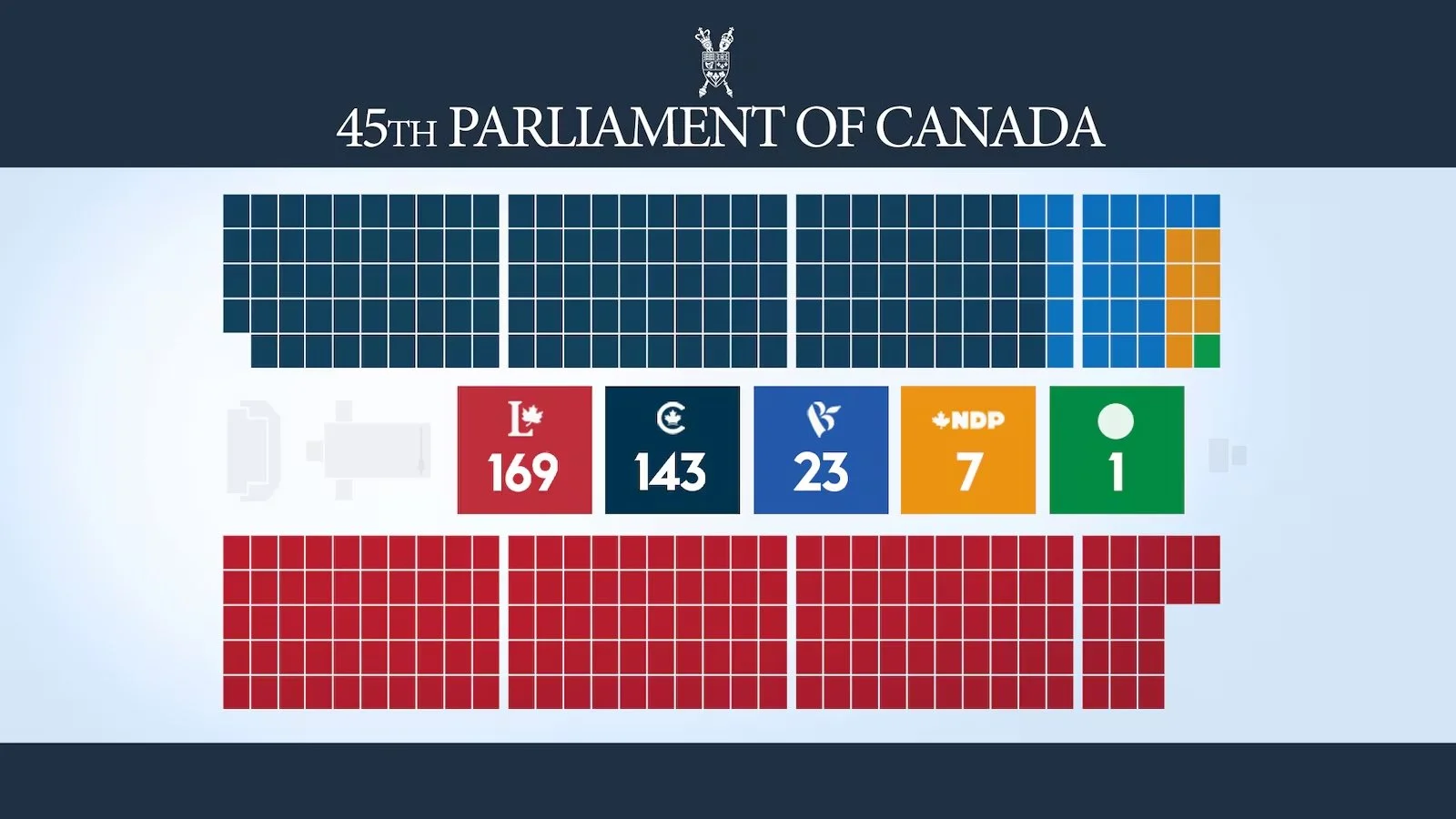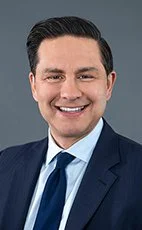Canada
-
Capital: Ottawa
-
Description text goes here
-
Canada is made up of 10 Provinces:
Ontario
Capital: Toronto
Pop: 16,258,260
Québec
Capital: Québec City
Pop: 9,110,616
British Columbia
Capital: Vancouver
Pop: 5,697,536
Alberta
Capital: Edmonton
Pop: 5,029,346
Manitoba
Capital: Winnipeg
Pop: 1,509,702
Saskatchewan
Capital: Regina
Pop: 1,266,959
Nova Scotia
Capital: Halifax
Pop: 1,093,245
New Brunswick
Capital: Fredericton
Pop: 869,682
Newfoundland and Labrador
Capital: St. John’s
Pop: 549,911
Prince Edward Island
Capital: Charlottetown
Pop: 182,657
Canada’s Political System
Canada is a parliamentary democracy and constitutional monarchy. For a party to gain a majority in parliament, it must attain 172 seats out of 343 seats. If the party who receives the most vote share gets less than 172 seats, it can either form a coalition with another party or rule in a “hung parliament” as a minority rule.
The Prime Minister is not directly elected. The parties hold “membership elections” to choose their party leader. That leader will become Prime Minister when his or her party win the most seats in the federal elections.
Each of Canada’s 10 Provinces elect “premiers” of the province in the provincial elections.
The 45th House of Commons shows the Liberal Party currently holding 169 seats, 3 seats from a majority government. The Conservative Party (143), Bloc Quebecois (23), National Democratic Party (7), and Green Party (1) makes up the rest of the House of Commons.
Canadian Political System
Sovereign Body: Canadian Parliament
Head of State: King Charles III
Head of Government: Mark Carney, Prime Minister (Liberal) since 14 March 2025
Governor General: Mary Simon since 26 July 2021
Election Occurrence: Every Four Years, but can be called earlier if:
the Governor General accepts the Prime Minister’s advice to dissolve Parliament, or
if the Governor General accepts the resignation of the Prime Minister after the Government has been defeated on a motion of confidence in the House and the Governor General does not ask the leader of another party to become Prime Minister and form a government.
Legislative Bodies:
Senate: 105 Seats appointed by the Governor General
House of Commons: 343 seats elected by Canadian citizens
House of Commons:
Based on geographical divisions called “electoral ridings.” One Member of Parliament is assigned to each 343 electoral ridings.
Voting System
First-Past-The-Post: In every riding, the candidate with the plurality of votes wins a seat in the House of Commons. The winning candidate need not win 50% of the vote to win the seat.
Source: https://electionsanddemocracy.ca/parliament/canadas-political-system
Major Political Parties
-
The Liberals are a centrist political party founded in 1867. It’s current leader and the Prime Minister of Canada is Mark Carney. It currently holds a majority of seats in the House of Commons following the 2025 election. The Liberals have formed 26 governments since Canada became a federation in 1867.
-
The Liberals are considered a “big tent” party operating on the center-left or center of the Canadian political spectrum, in other words, a fiscally responsible and socially progressive platform. The Liberals reflect a moderate, technocratic, and pragmatic management of the economy, ranging from higher social welfare spending to tax cuts for the lower class. While Liberals once were skeptical of small government and low taxes, the modern party has shifted more to the center, promoting the free market while staunchly opposing conservative attempts to cut funding for universal health care and other government programs.
-
Similar to other center-left parties in the Western world, Liberals do exceptionally well in the inner cities, gaining a majority of its seats in Toronto, Montreal, and Vancouver. Liberals also gain a significant amount of its seats in Newfoundland and New Brunswick.
The Liberals do poorly in western provinces such as Saskatchewan and Alberta as well as many Ontario suburbs north of Toronto.
Mark Carney
Prime Minister since 14 March 2025
Leader of the Liberal party since 9 March 2025
Member of Parliament of Nepean, Ontario since 25 April 2025.
Major Political Parties
Pierre Poilievre
Leader of the Opposition since 18 August 2025
Leader of the Conservatives since 10 September 2022
Member of Parliament of Battle River—Crowfoot
-
The Conservatives are a center-right political party founded in 2003 after a merger between the Progressive Conservative Party and the Canadian Alliance. It currently holds the second most seats in the House of Commons following the 2025 election and is official opposition party in Parliament. The Conservatives held a majority under Stephen Harper from 2006 until 2015. Since 2015, the Conservatives have not held a majority in Parliament.
-
The Conservatives operate on the center-right to right-wing of the Canadian political spectrum. The Conservatives believe in fiscal conservatism: lower taxes, reduced spending, and opposition to a carbon tax. Conservatives would reduce net immigration, increase energy production, and build closer ties with CANZUK (Canada, Australia, New Zealand, and UK).
-
The Conservatives win large majorities in the western rural provinces of Alberta, Saskatchewan, and Manitoba. The Conservatives also do well in the Northern Ontario suburbs, Vancouver suburbs in BC, and pockets in Quebec, Newfoundland and New Brunswick.
Major Political Parties
-
Description text goes here
-
Description text goes here
-
Description text goes here
-
Description text goes here
-
Description text goes here
-
Description text goes here
-
Description text goes here
-
Description text goes here
-
Description text goes here
-
Description text goes here
-
Description text goes here
-
Description text goes here









